Day 107
I set off from Panama city at just after 6 o’clock in the morning on Wednesday 3rd of April and my plan was to get to the city of David which lies about 35 miles West of the main border crossing between Panama and Costa Rica. The bike had just recorded 2,000 miles on the odometer the day before and the ride that day was just under 300 miles. The ride itself was pretty non eventful despite the 14 police speed traps that I passed all the way along Highway 1 during it. The 14 police speed traps that I passed were only the ones on the Westbound side of Highway 1, there were at least the same number if not more on the Eastbound side. I eventually arrived at my destination for the night in the city of David at around 3 o’clock in the afternoon and I then spent a quite night contemplating whether or not I would be told when I eventually reached the border the following day, if I had the correct documents or not.
Day 108
I left David early at about 8 in the morning and I rode the 35 or so miles to the border along Highway 1. This part of Highway 1 is mostly speed restricted to 60 KPH (40 MPH) and there were also 4 police speed traps along this part of the road. When I eventually arrived at the border crossing at the town of Paso Canoa, about an hour later at 9 in the morning, as I anticipated it was chaos. All there was to suggest that there was a border crossing is a big building with the word “Panama” written on it, there were no signs saying “Frontera” (Spanish for Border), nothing!

Anyway, I parked up outside the big building and wandered down one side of it where I found the windows that are marked “Salidas”, (Spanish for “Departures” or similar) I then spoke to a woman who was sitting behind the window who then told me that the border was not open for vehicles, it was only open for people who are crossing without a vehicle.
Oh that’s right, that means me!
I then spoke to a lorry driver who was hanging about and he told me that the customs officers were at their work but they were on strike, they were not processing any vehicles until only who knows when. According to him, one of the customs staff told him that it could be 5 minutes or 5 hours until they decide to start working. He also told me that the reason for the strike was something to do with the Panamanian Government not paying the customs staff wages that were owed to them.
After all of the trouble that I had to go to to obtain the correct documents, once again I found myself unable to cross the border. I then decided to go to a nearby “Fonda” (a cheap and cheerful type of restaurant mainly used by local people) for a coffee. Three coffees, 3 cigars, and 3 hours later the border was still closed to me and another 2 hours later, as it was approaching 3 in the afternoon, I was considering calling it a day and returning to David when the skies opened up and it began to rain very heavily. As riding in that rain was out of the question I resigned myself to even more waiting around until it went off.
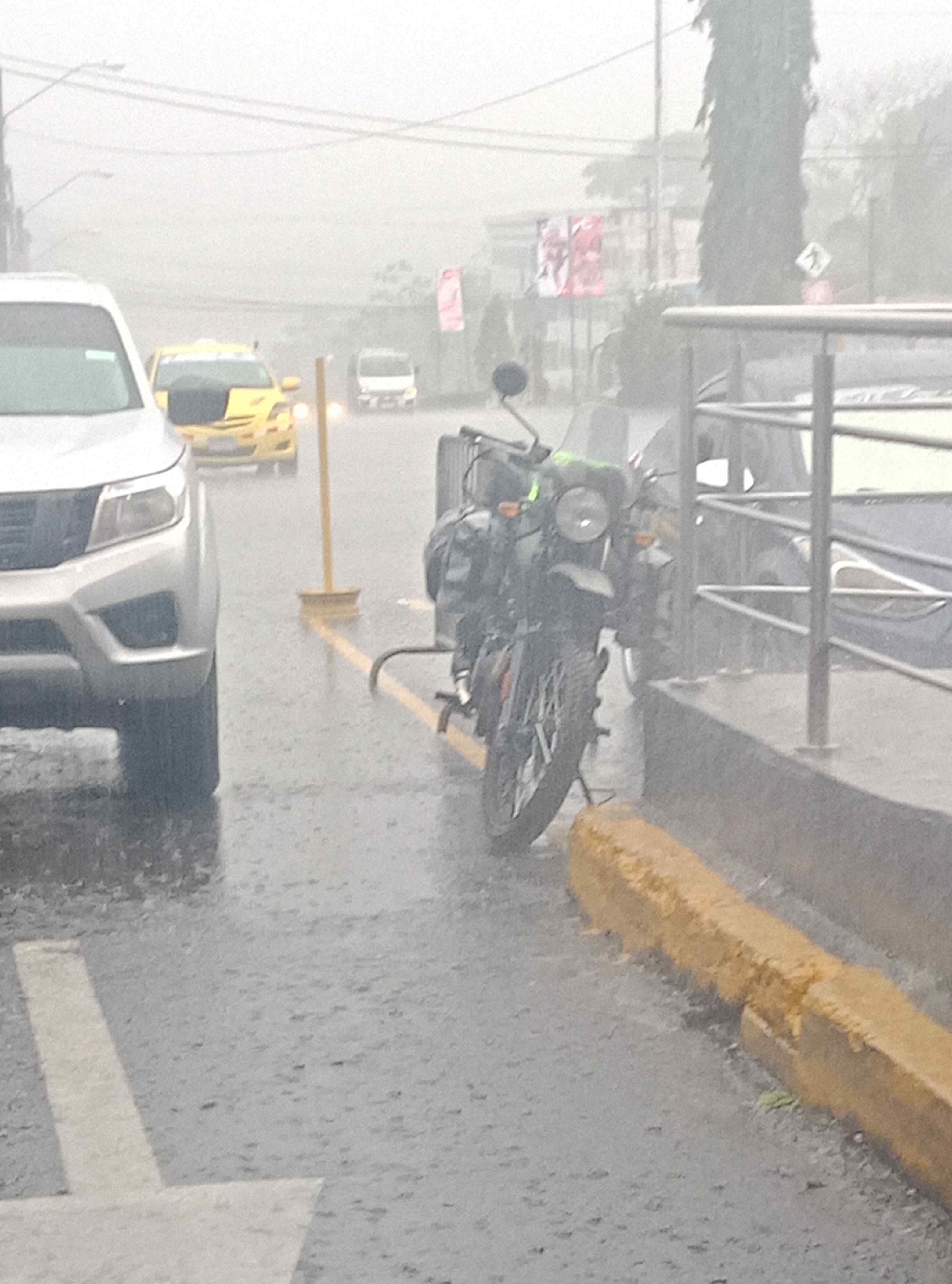
It was still raining heavily when suddenly at about 4 in the afternoon the customs officers decided to start working again and I was called to one of the windows for processing. This time I apparently had the correct documents but the Police document which was valid for 8 days when it was issued 2 days earlier apparently needed a fresh stamp on it for some unexplained reason, so I was sent away to get it. Luckily for me the police office was above the main customs office and once I had obtained the fresh stamp I returned to the window for processing. After handing over all of my original documents I was then asked for copies of certain ones but not all of them. Once this process had been done to the woman’s satisfaction I was given my original documents back and told to bring my bike under the covered area and to give my original customs document to the supervisor who was hanging about under the canopy.
I ventured out in to the rain where my bike had now been sitting in very heavy rain for about an hour, the bike started first time. When I parked under the covered area, I was now soaked but I found the customs supervisor who entered the details of my bike in to a book and then that was it, I was free to go to Costa Rica in the pouring rain. I got on the bike and rode 10 yards out from under the covered area and apparently I was in Costa Rica, and I mean in the middle of a major road junction with traffic and pedestrians. Again chaos!
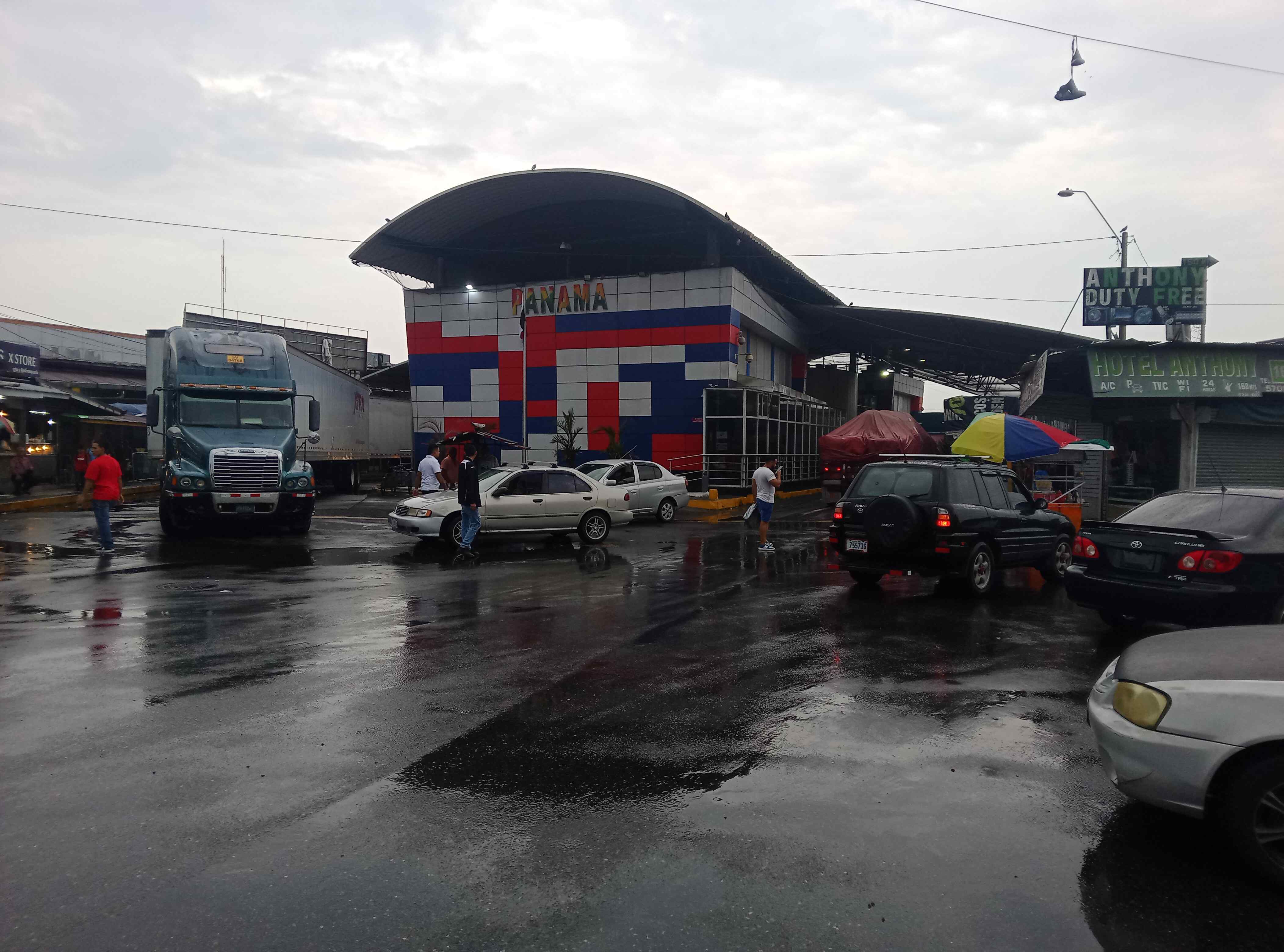
The rain was still chucking it down and now I had to find the Costa Rican customs and immigration offices. About 30 yards up the street I saw a sign for the police and I headed to there. I spoke to a policeman who told me that the customs and immigration officer were about 100 yards further up the road. I eventually found the place and parked up under cover but by this time I was thoroughly soaked. My jacket at least seemed to be waterproof as advertised but sadly, my trousers were not waterproof without the inner waterproof liner which I had not thought to put on when I left David in brilliant sunshine and 90 degree temperatures!
Getting off the bike I first had to find the office where I could purchase vehicle insurance for my bike, I found it easily enough and it cost me $45 for 3 months cover thank you very much! I wasn’t sure how much time that I was going to spend in Costa Rica but it was certainly not 3 months, however that was the only option that was available. Then I had to go to immigration to get the entry stamp in my passport, this was easy to find as it was next to the insurance office. Then I had to go to the customs office and get my Temporary Import Permit (TIP) that allowed me to take my bike in to Costa Rica and again it was easy to find as it was next to both the insurance office and immigration.
Once there I needed to fill in a form with my passport and vehicle details, including the time that I wanted the TIP to run for, I opted for 14 days. As I had been sitting about all day waiting to see if I was going to be allowed to cross the border, I had obviously not booked any accommodation either in Costa Rica or in Panama (in case I never got in to Costa Rica), so when I was getting issued with my TIP I was asked for a destination address in Costa Rica. Apparently even travelling by road in to Costa Rica you are required to have a destination booked. So I then quickly booked a small guest house in Costa Rica about 7 miles from the border.
I was then issued with my TIP which was free of charge. I was told to scan a QR code on the window so that I could access it online. I tried this but guess what? Yes that’s correct it didn’t work. The customs guy asked for my phone which I gave him, he fiddled around with it for a bit and then gave up and just took a photo of my TIP which was on his computer screen. At this point he then told me to take my vehicle to the rear of the building for an inspection, so I trundled out in to the heavy rain and parked behind the customs building.
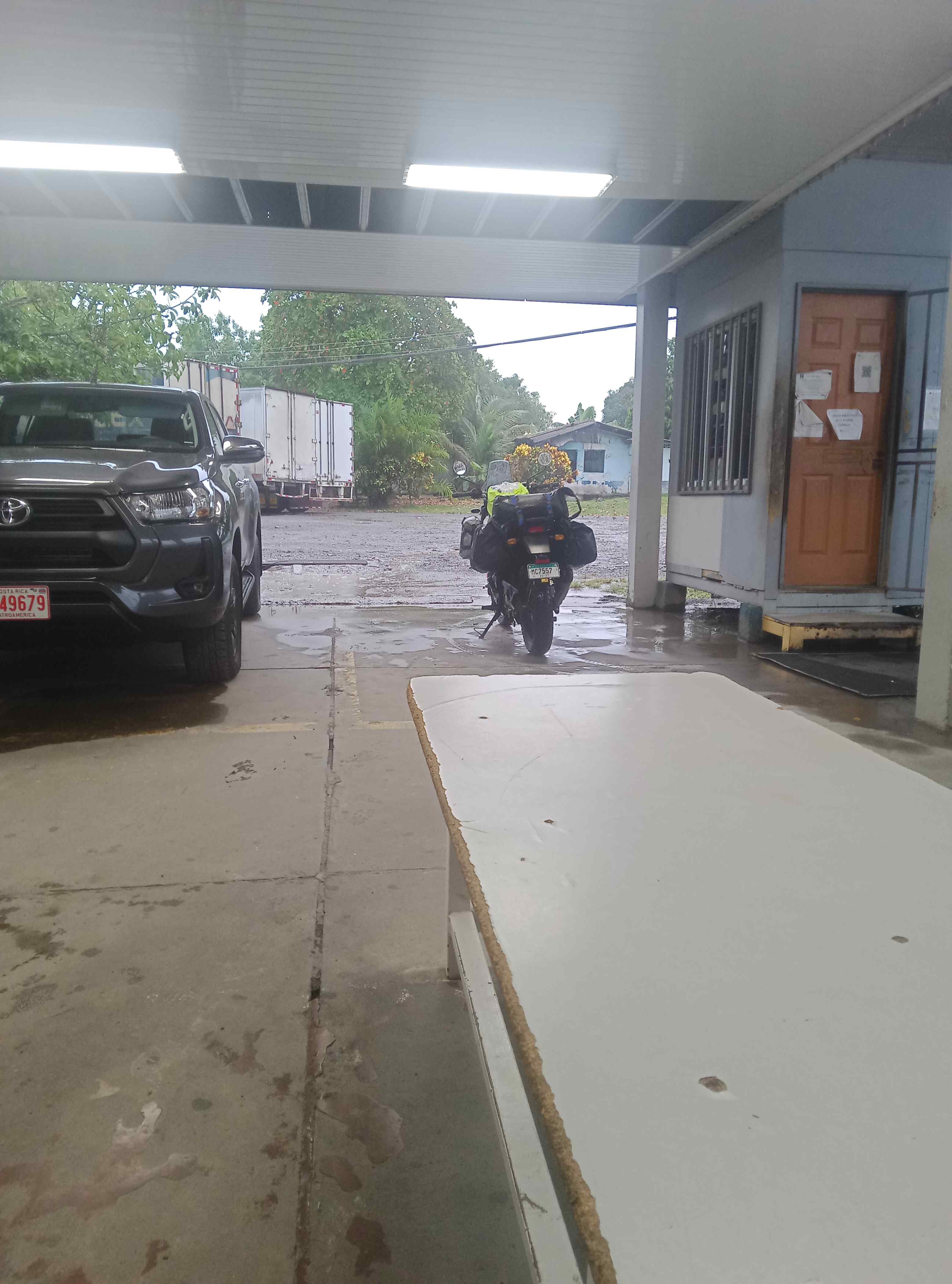
Again I waited, however I only waited for about 30 minutes this time, then the customs officer who issued me with the TIP appeared and started to inspect all of the vehicles that people, including me, were bringing in to the country from Panama. When it was eventually my turn all he did was check the frame number on the bike and that was it, I could now legally ride in Costa Rica.
As I set off in to Costa Rica the first thing that I needed to do was to get a SIM card for my phone, so I made some enquires and I was eventually directed to a large store where I bought a SIM card for $5. Although I bought the SIM card there apparently I could not buy a top up for it so that I could actually use the SIM card. How very strange. Eventually after making lots of other enquires I discovered a small store right in the middle of the chaos directly outside the border crossing area selling odds and sods and I was able to top up my SIM card there for 14 days for $10.
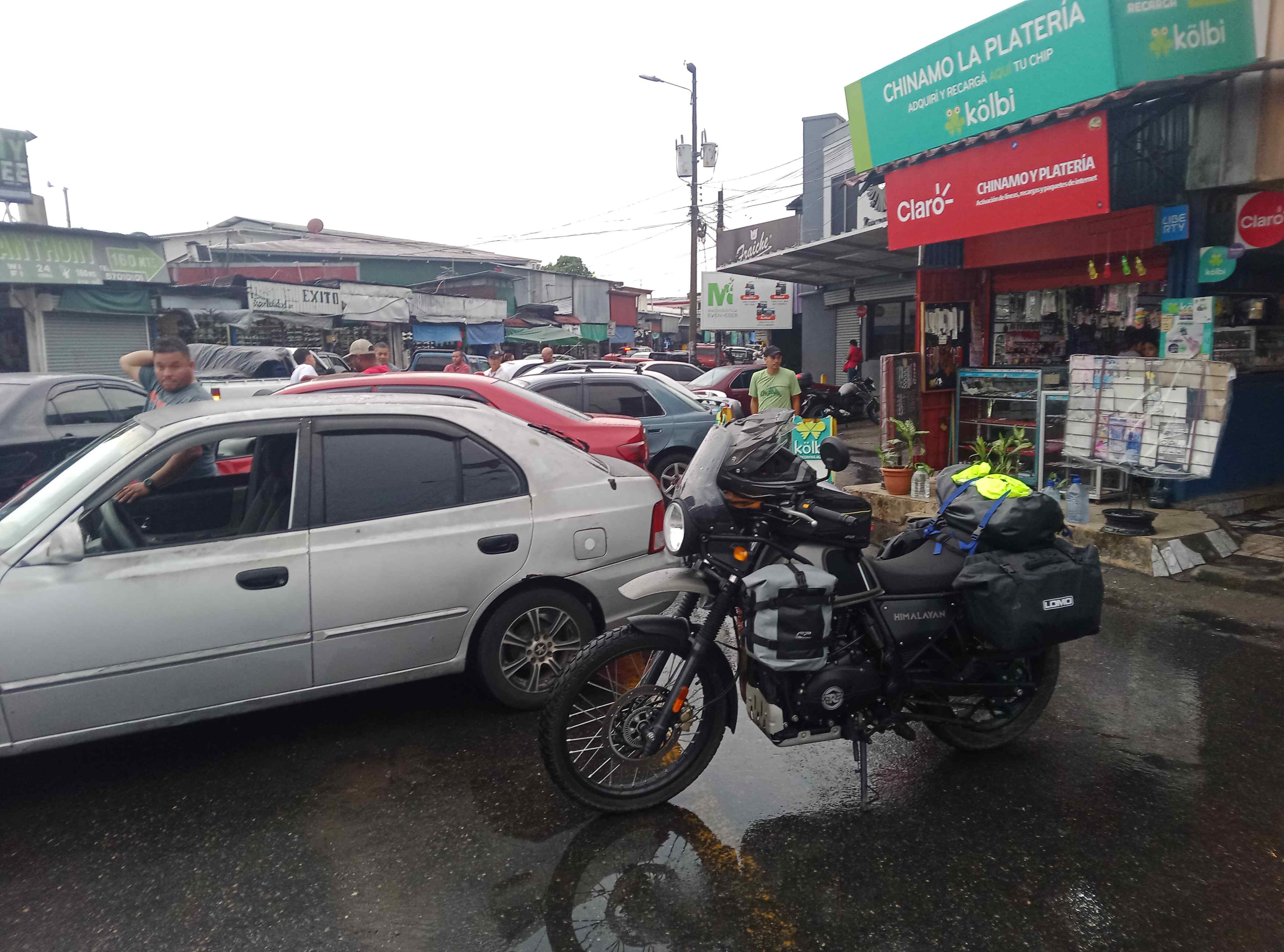
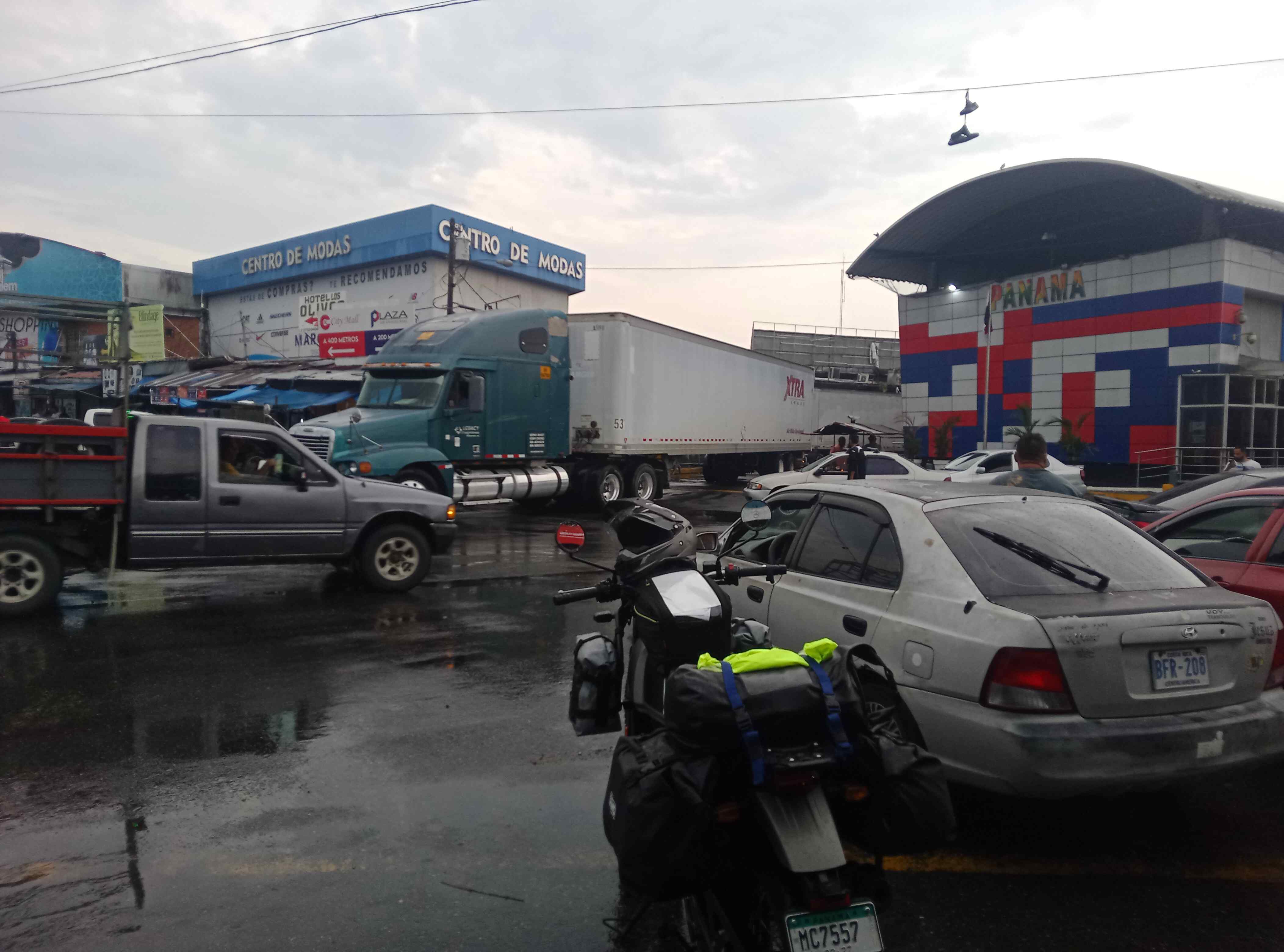
I don’t know how much Internet data I paid for as the woman running the shop did it all from her mobile. Again how very strange. Anyway I asked the woman who topped up my phone where I could change US Dollars for the local currency of Colones and she pointed to a guy in a cowboy hat sitting at the other side of the road. Now this was directly outside the Costa Rican side of the border crossing, however I went over and I exchanged $50 for 25,000 Colones. The official exchange rate in 505 Colones for 1 US Dollar which means that he only took about half of a US Dollar as a fee. Again I found all of this very odd and almost surreal.
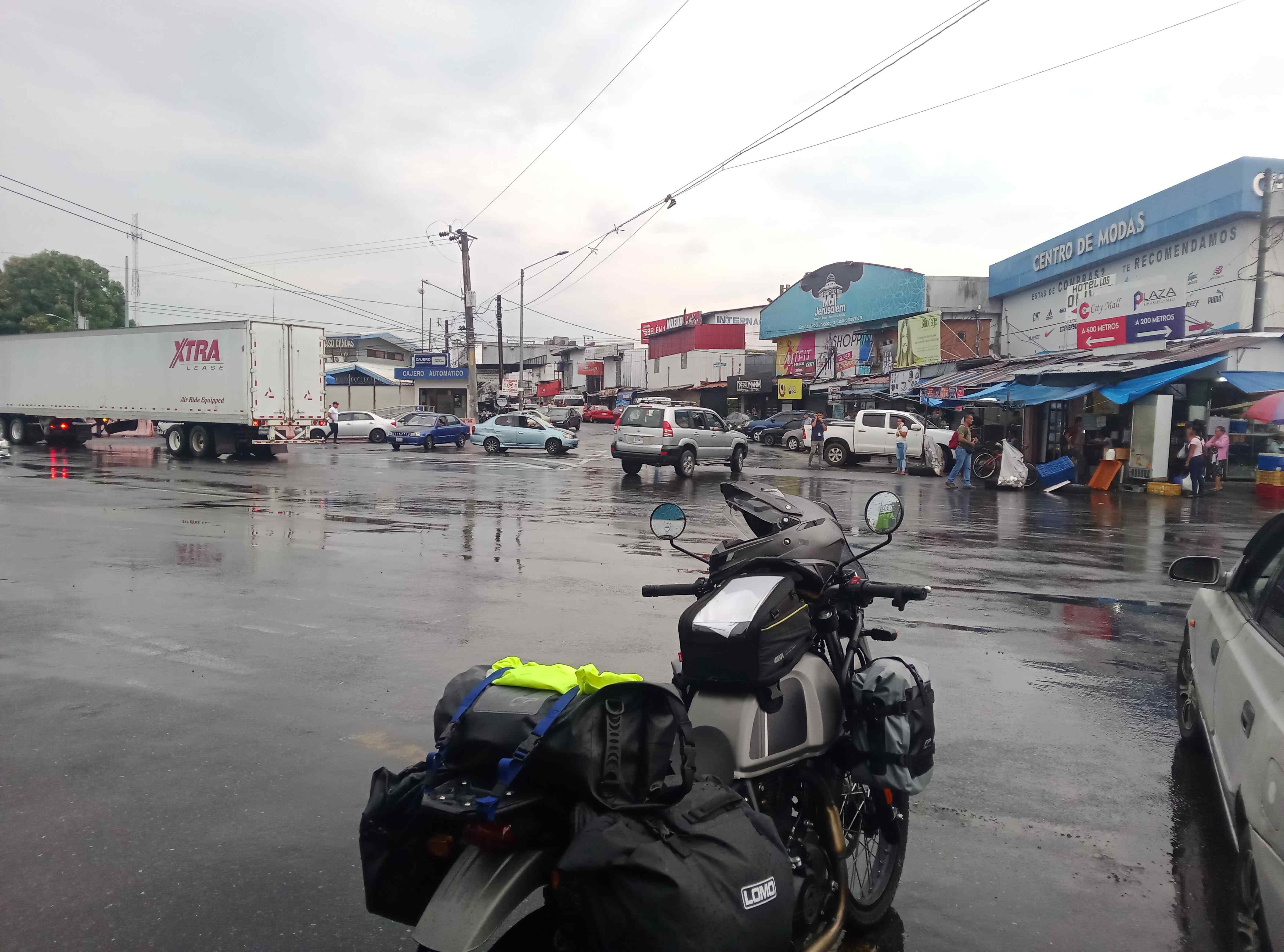
Now that I had internet, I could head to the property that I had booked in the Customs office. By now the rain had stopped so I was feeling upbeat despite the wasted day sitting waiting on the Panamanian side of the border. I got to the property relatively quickly but no-one was there, there was also no response from my messages to the owner, and the phone number listed on Booking.com seemed to be disconnected. It was getting dark so I headed for a bar that I had seen about 1 mile back towards Paso Cano, parked up got a coffee and waited to see if the property owner contacted me. An hour passed and it was now fully dark, and having had no response from the owner of the property, I had no alternative but to book a very nice hotel in Paso Canoa for $70 for 1 night. Once there I had a hot shower and settled in for the night.
Day 109
My $70 hotel room was nice enough and it came with breakfast included in the price, however as I was riding to and from Paso Canoa the previous evening I had noticed something which I thought was very strange. I had seen 2 roads running parallel to each other but each of the roads had 2 lanes, 1 in each direction, and this did not make any sense to me. Why have 2 identical roads running parallel to each other when only one would suffice?
When I checked it on the map I was astonished to discover that the road to the East side of the dividing grass verge was in Panama whilst the road to the West was in Costa Rica, the border being the grass verge in between. So before I had breakfast I had to go and look for myself in daylight at these roads which were only about 100 yards away from my hotel. Sure enough, it was true, there was no actual physical border there, anyone could cross the grass verge going from one country to the other unimpeded. Only at the border crossing building was there any sense that an actual border existed. The previous day, I could have ridden about 500 yards from the border crossing building, and then across the grass verge (albeit illegally) and in to Costa Rica without waiting or having all this hassle.
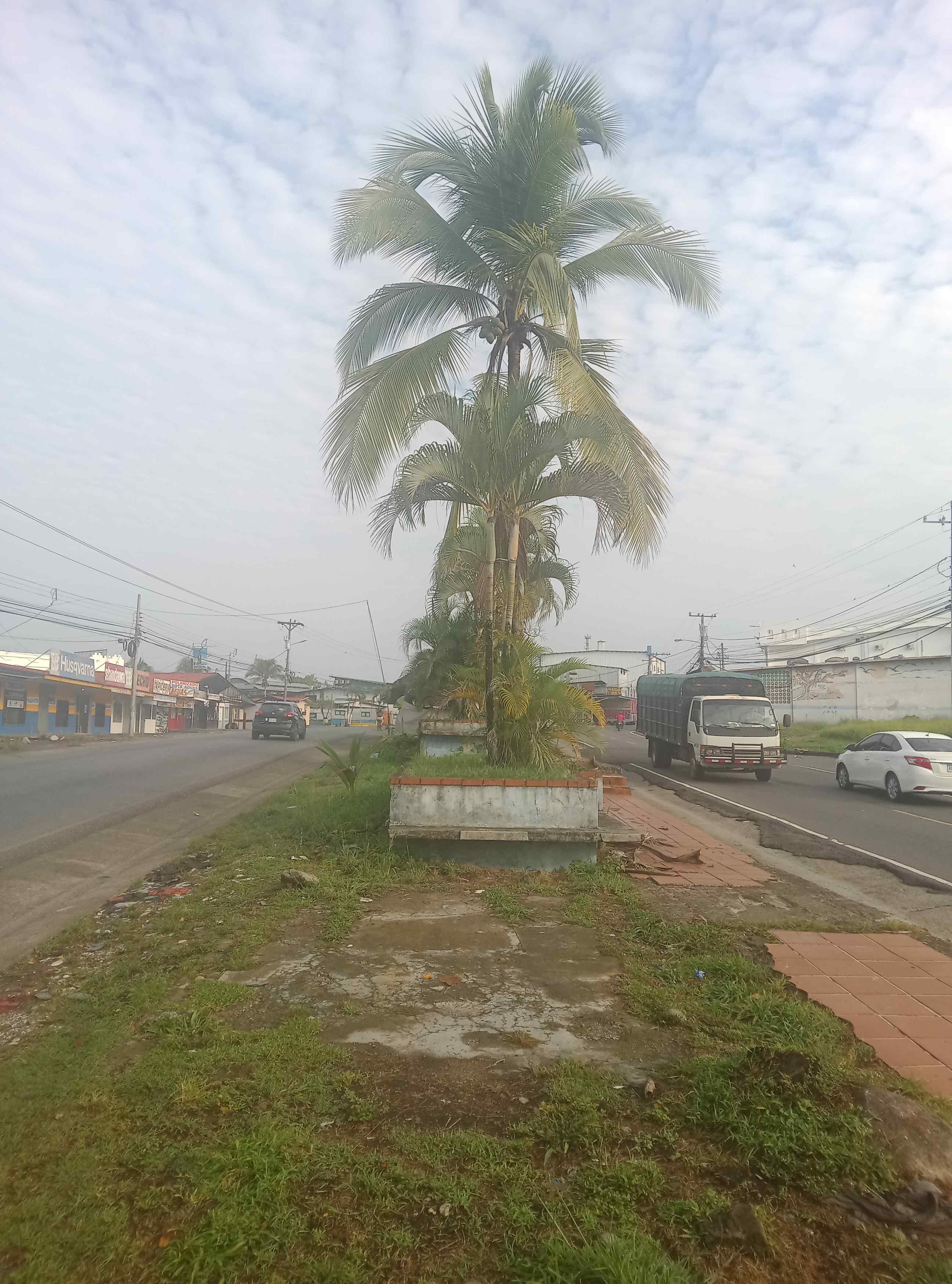
So after breakfast I set off from Paso Canoa on Highway 2 in the direction of San Jose but after about 15 miles I turned right at town of Corredor on to road 237. I really enjoyed this road as it climbed up the mountains in the direction of San Vito and occasionally I was able to catch a glimpse of the valley far below through an occasional break in the thick foliage. This road was great to ride on as it was well surfaced, apparently well maintained, and unlike most of the roads in Panama, free of potholes. I also made a coffee stop on the road in a bar that I liked the look of, but although it was a very nice place with a good outlook, the coffee was pricey at 1,500 Colones (about $3) a cup.
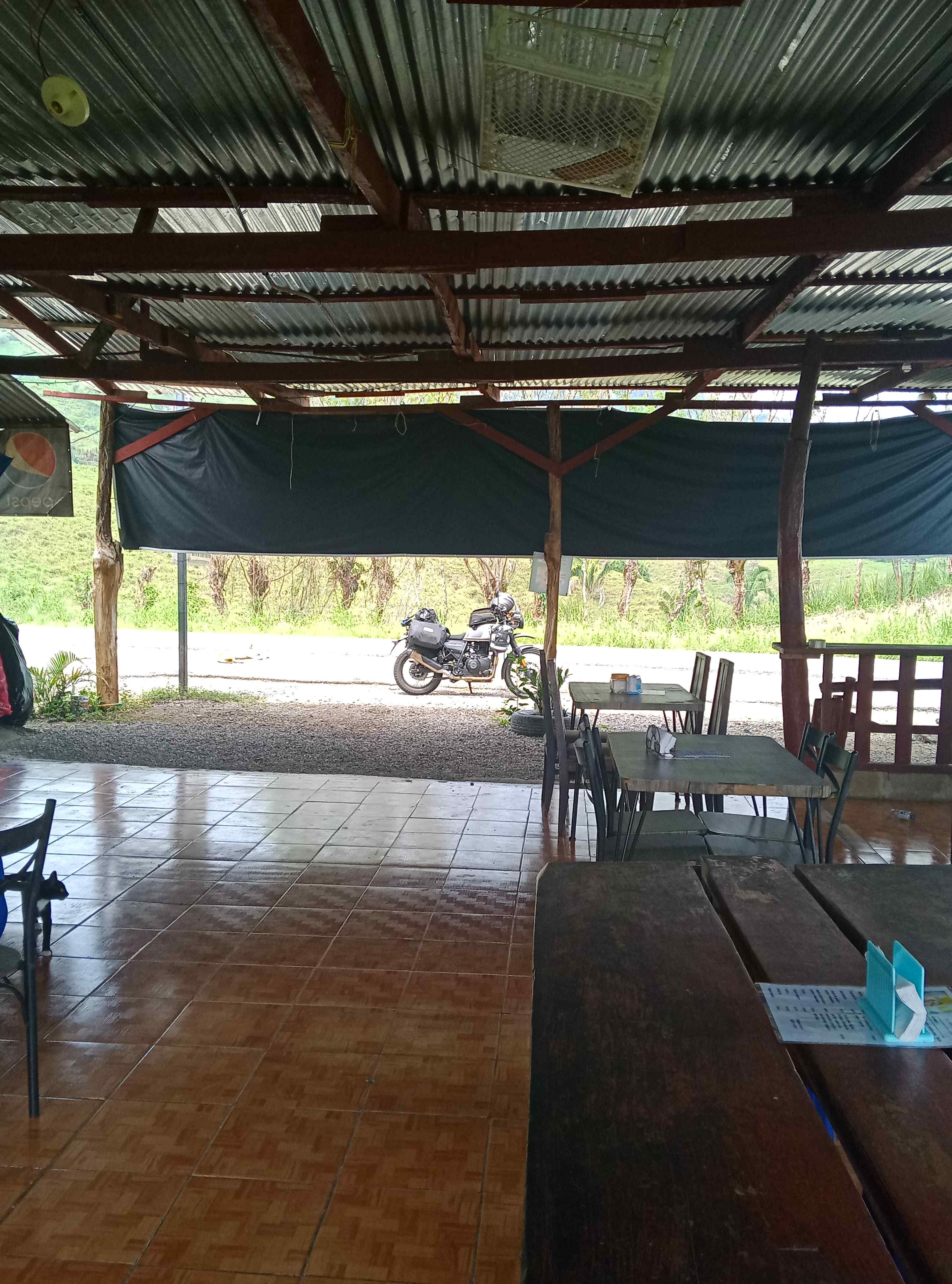
Eventually the road dropped down the other side of the mountains and into the valley on the other side, the scenery here was very spectacular and I stopped to take a few pictures of the river and a bridge over it which had only a steel mesh grid for a road surface, very wobbly on the bike as the front tyre was constantly pushed and pulled in alternating directions by the steel mesh grid.

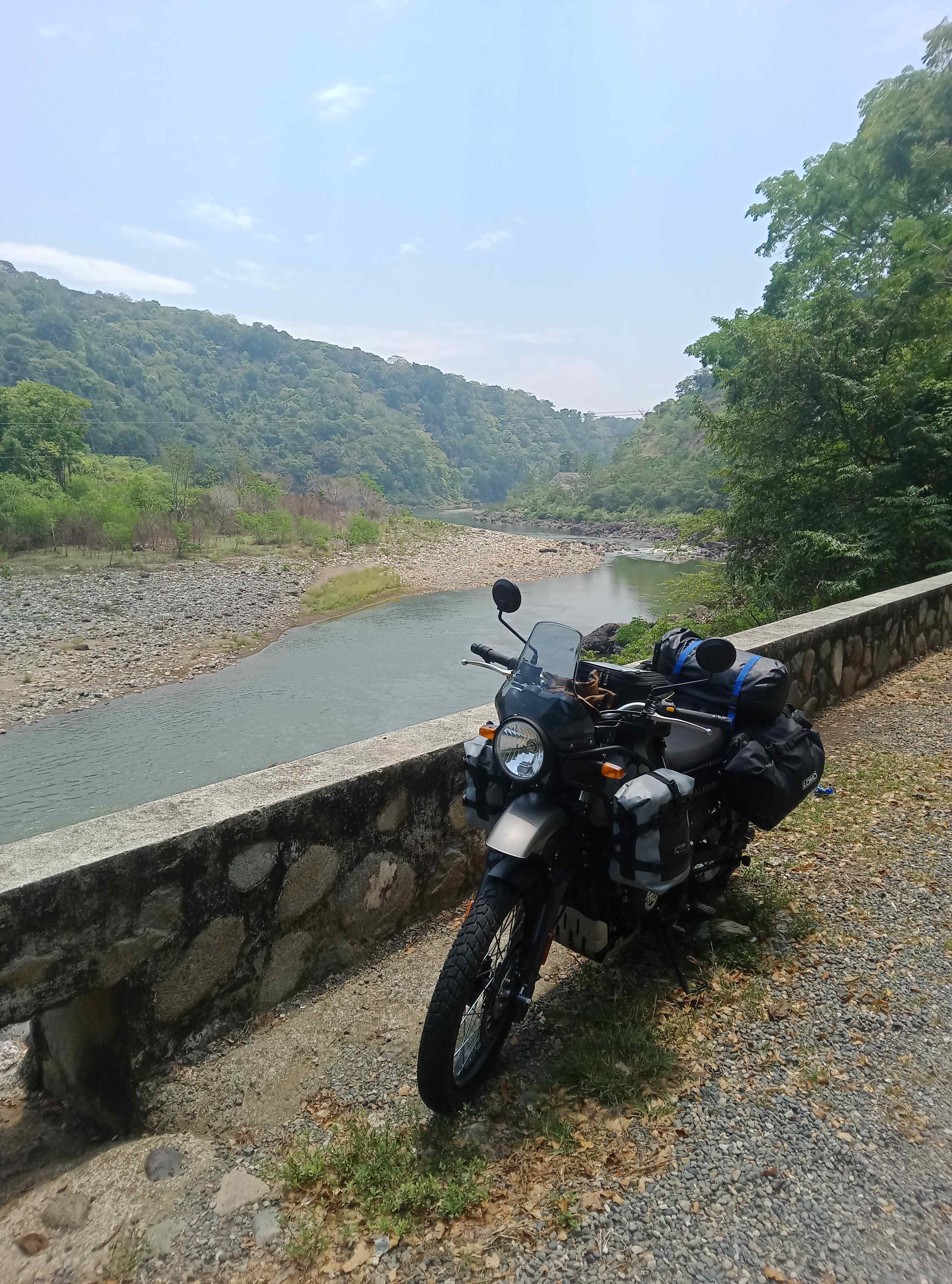
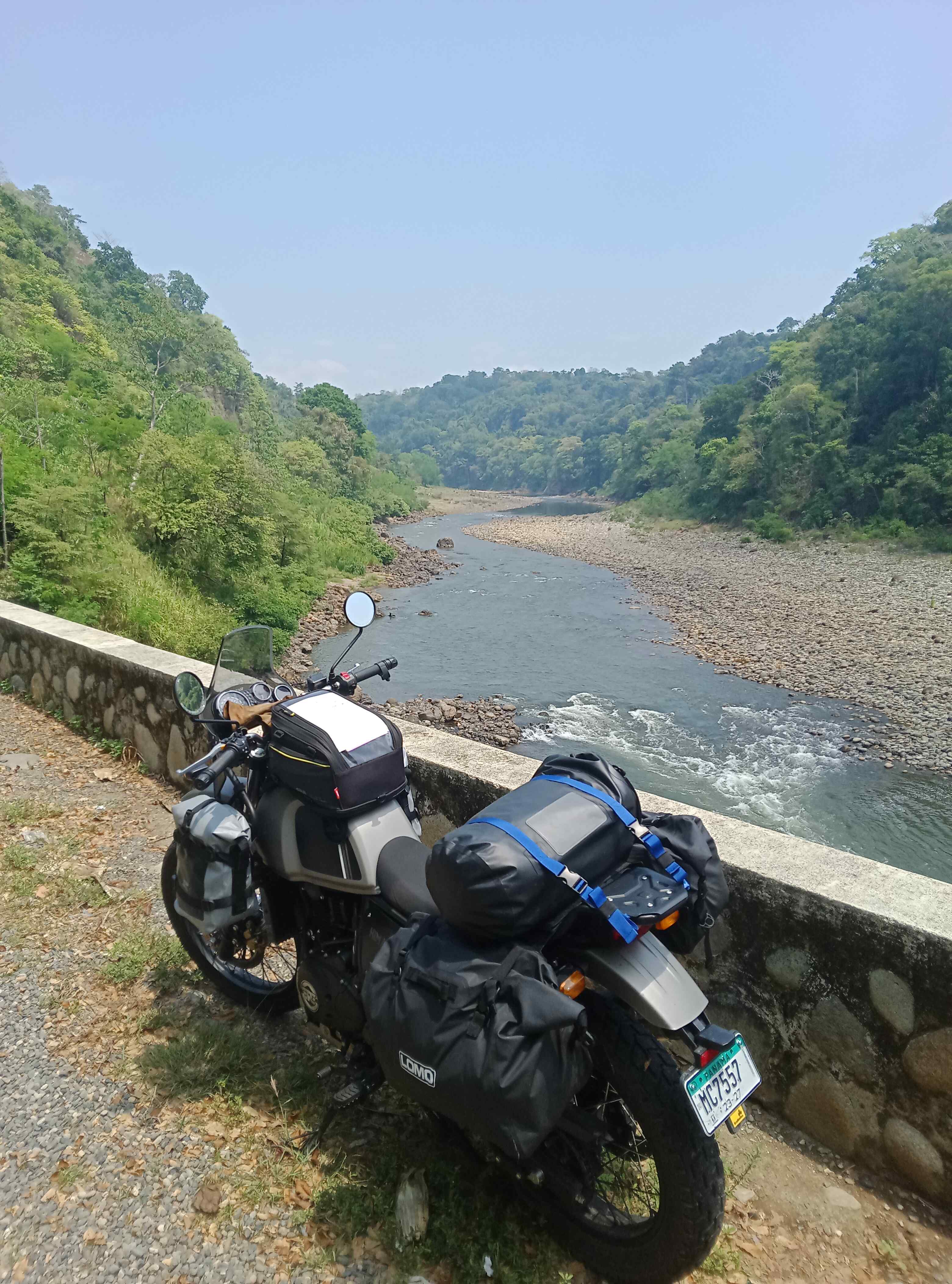
By mid afternood I was in San Isidro and after settling in at my accommodation I went for a stroll about the city.
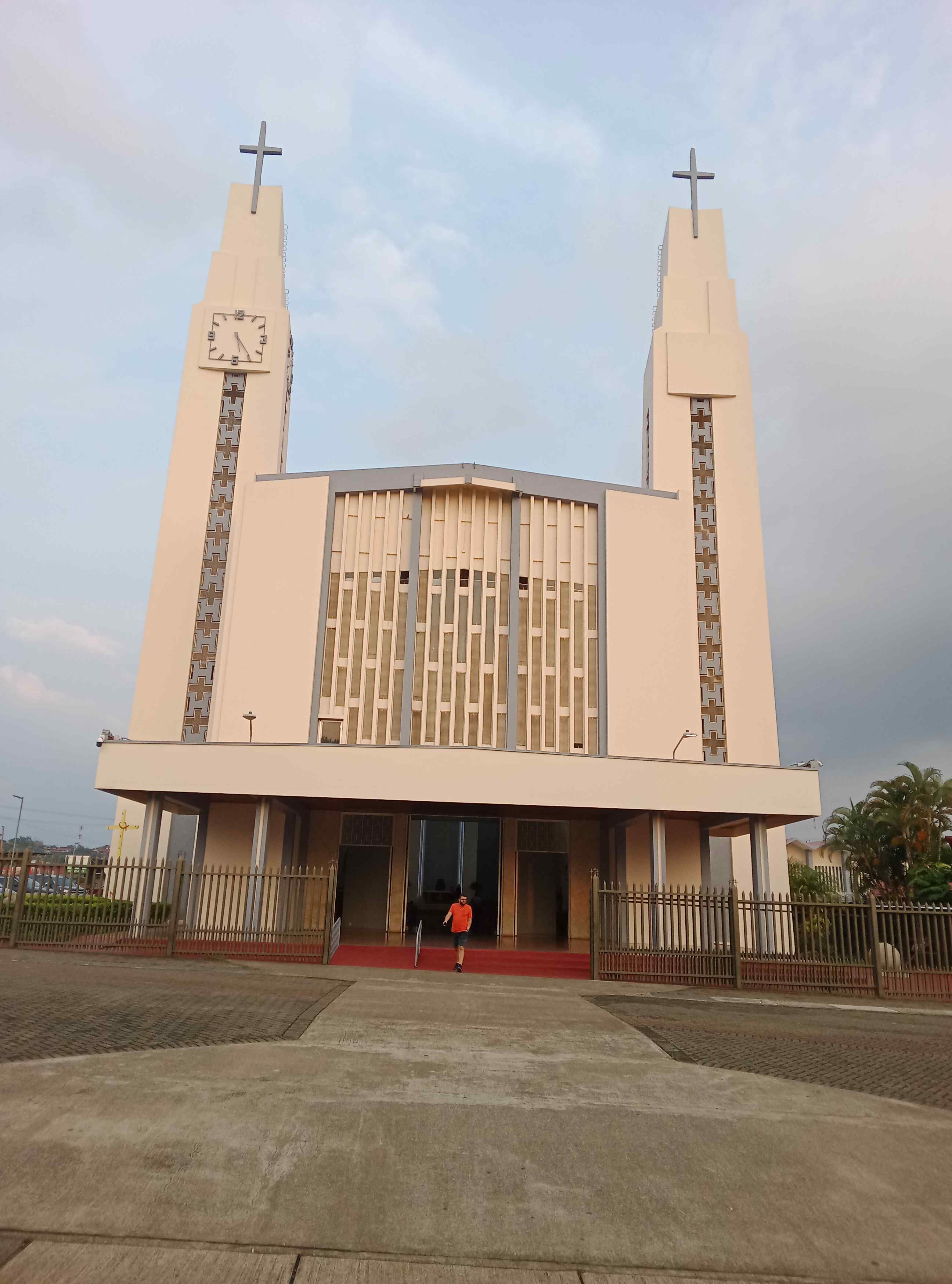

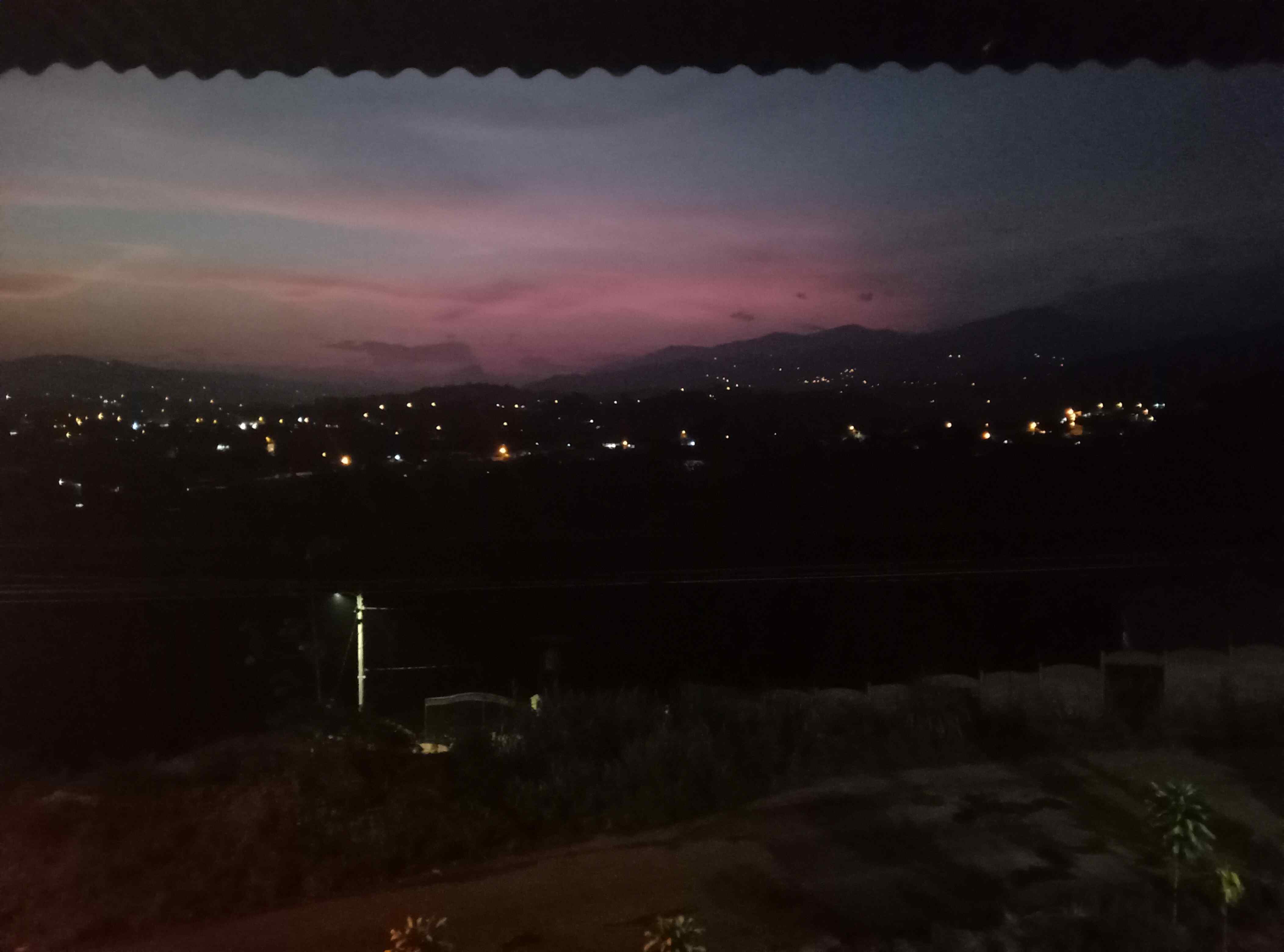
Now as I reflect on my border crossing escapades I can not help but think that they way things are done here in Central America seem to only cause issues for law abiding persons such as myself who wish to comply with the requirements for entering and leaving a country legally. Again it seems to me that if you wish to do things legally then there are many problems to be overcome and many fees to be paid.
However, if I were the sort of person who didn’t give a toss about such things I could easily have entered Costa Rica without doing all of this stuff by simply riding over the non-existent border between the countries and have been on my merry way with no hassles or concerns and with more money in my pocket.
Now I must state here that it did say on a notice at the Costa Rican side of the border that to use a foreign vehicle in Costa Rica without a TIP would result in the confiscation of the vehicle and or a substantial monetary fine, but that’s only if you get caught doing it.
However, once I crossed the border legally I rode for about 8 hours and for about 150 miles or so and I only saw 1 police patrol car, so as far as I can see from my limited time in the country the chances of being caught seem to be slim to non-existent.
Now I might be wrong but I don’t suppose that a criminal would really care about doing things legally, taking advantage of such unsecured borders to travel freely between countries without scrutiny and doing what a criminal does. Maybe this is why Central America has a reputation for being a dangerous and lawless place.
Only more miles on the bike and more experiences at more border crossings will probably answer this question for me.